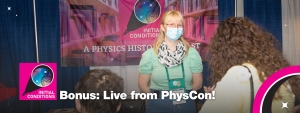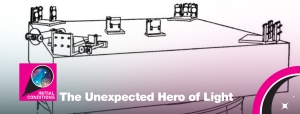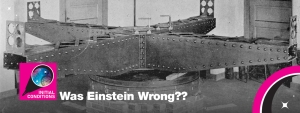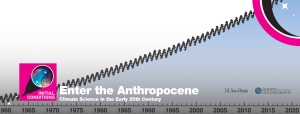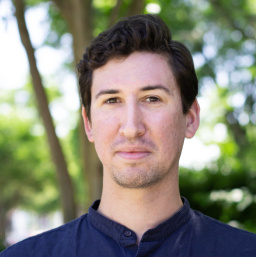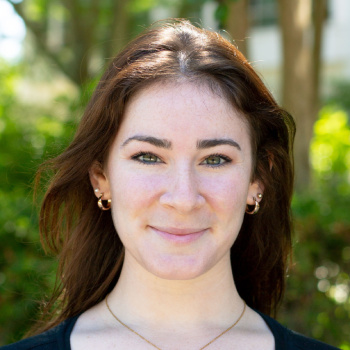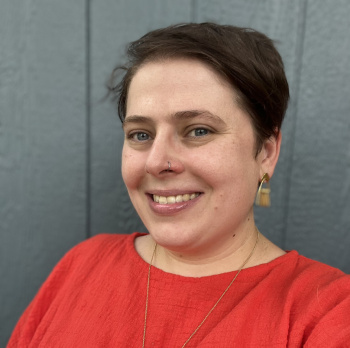
Inspired by David Kaiser's 2011 book, How the Hippies Saved Physics: Science, Counterculture, and the Quantum Revival, this episode will cover the discomfort many physicists experienced while grappling with quantum mechanics and how their unconventional methods led to quantum key encryption. Like many Americans of the 1960s and 70s, some physicists took part in questioning traditional institutions. They engaged in philosophical questions of quantum mechanics driven by Bell’s Theorem that revealed entangled particles’ seemingly father-than-light communication could not be explained by any known mechanism. While other physicists put their heads down and calculated, these hippie physicists dabbled in psychedelics, consulted with magicians, attempted to communicate with ghosts through atomic decay, and tried to communicate with each other–telepathically. They also questioned whether Western science's objective observer tradition was sufficient for quantum physics where observing a particle’s behavior changes it. Though some of their investigations may be deemed pseudoscience, there was value in thinking outside the box (or infinite potential well, for the physicists listening) and from their work, we know more about quantum mechanics and its applications.
Speakers: Maura Shapiro and Justin Shapiro
Initial Conditions Episode 4: How the Hippies Saved Physics Date: August 2, 2022
JUSTIN: From the Niels Bohr Library and Archives, welcome to Initial Conditions.
ALLISON: I'm Allison Rein.
JUSTIN: I'm Justin Shapiro.
MAURA: And I'm Maura Shapiro.
JUSTIN: And we're walking through the library stacks in College Park, Maryland.
MAURA: So I started out here as an intern. I was an intern remotely, so it was a while before I was actually let into the stacks, but they let me browse for a little bit, and there's just like rows and rows and rows of books and I was just looking through the titles, seeing if anything was particularly interesting. And this book that we're coming up to right now immediately caught my eye. David Kaiser's book, "How the Hippies Saved Physics." And first of all, it's in this funky font. There's a little atom imagery, and bright blue text, but what caught my eye more was just the idea of hippies and physics, because I think often there's one idea of what a physicist looks like, and it's not necessarily a hippie. So I pulled it out and I sat down on the floor and started reading.
JUSTIN: This book made a huge impression on you.
MAURA: It did, it really did. And hippie physicists are what we're going to be talking about today.
JUSTIN: Hippie physicists.
MAURA: Yeah. Hippie physicists who were unsatisfied with how quantum mechanics was being investigated in the 60s and 70s. At the time, it was very much, "Follow the math, don't ask questions about philosophy." But physics is sort of a philosophy. You're asking how or why things are happening. And a lot of the mechanisms for investigating these questions that had worked for earlier physicists were just not working for this new generation.
JUSTIN: Okay, you got all that from one book?
MAURA: I happen to know a lot about quantum mechanics.
JUSTIN: Yes.
MAURA: (laughs)
JUSTIN: We'll be taking a deep dive into that in just a bit, but we're going to start by setting out some initial conditions that provide the context for physics to happen.
MAURA: The first being a new understanding of electricity, magnetism, radiation, and optics, and how they're all related phenomena. And this kind of came to a head by the start of the 20th century. The second initial condition today is World War II, and the third is the American counterculture movement.
JUSTIN: Yeah, I'm interested in the counterculture. I'm mostly interested in the environmental movement.
MAURA: Mmhmm, yeah, since that is your specialty.
JUSTIN: Yeah, it was a real challenge to the environmentalism that came before it.
MAURA: And as we talked about in the last episode, this was a huge time of change for the environment as well as American culture.
JUSTIN: So you know, you learn in college that any research project, you have to be passionate about. You have to have an interest in it, right? So what drew you to hippie physicists and Bell's theorem?
MAURA: I love that question, Justin. So I think that my experience in physics has been there's kind of one way to be a physicist. And a lot of that has to do with, you know, race and gender, but also a lot of it has to do with your hobbies and I think the story about hippie physicists is kind of a way to break the idea of what it means to be a physicist. When I think of being a physicist, I think of people who are very serious and love math and science fiction. But being a physicist is being a person. People are multifaceted, and you know while there were the very serious nuclear physicists and stuff, there were also people who were really interested in philosophy and you know were a little bit on the American counter-culture, and maybe they were experimenting with LSD, which was a new drug. So I think all of that is just a really fun way to exemplify that being a physicist is still being a multidimensional person.
JUSTIN: Yeah, and as we talked about in the top of the first episode, a lot of what we want to do on Initial Conditions is talk about the stories that have been overlooked or under-studied. And I think a lot of the research that you've done here gets to the heart of an overlooked community in the history of physics, but one that left a really important mark on the science as it moved forward to the 20th century.
MAURA: Exactly. And I will point listeners to David Kaiser's book, "How the Hippies Saved Physics," where a lot of the research from this episode happened. It's a great read, it's a lot of fun. And it goes way more in-depth than this episode will.
JUSTIN: Well, with that said, let's jump into the initial conditions for today.
MAURA: Right. To understand why Bell's theorem is so significant, it's important to know a little bit about quantum mechanics. Quantum mechanics is the physics of the smallest things, and its name comes from quanta, or the smallest unit something can break down into.
JUSTIN: And even though we're talking about the smallest parts of the universe, as you'll hear, quantum really gets into some of the biggest questions we can have about how our universe works.
MAURA: Quantum was a long time in the making, but many people point to Max Planck's 1900 paper as the beginning of quantum mechanics. In this paper, he shows that if you treat energy like little packets, you can explain a very specific behavior of radiation absorption. Just a fun side note, the problem he was solving had been dubbed the "ultraviolet catastrophe," which is super dramatic and I love that.
JUSTIN: Wow.
MAURA: Yeah, wow. But really he was using this idea of energy packets as a little mathematical bandaid. He didn't really think about the physical implications of what he was doing, and it wasn't until five years later, when Albert Einstein published a paper on the photoelectric effect, which introduced the idea of not only energy quanta, but light quanta, which we call photons, that people started really thinking this might be the beginning of a new type of physics. And by the second decade of the 1900s, a new field of physics was starting to take shape. But many people were shocked by its implications and hesitant to embrace it.
JUSTIN: So this is a physics that goes back to 1900 with Max Planck's paper. And as we'll talk about in the rest of the episode, this is very much a 20th century story. But there are some really radical changes that take place in the community of physics after the second world war, really beginning in the 1960s and 1970s, that reshape the science in significant ways.
MAURA: Right, and I think this is why, again, setting the history is so important, is because this physics is really a product of its time, but also feeds into the culture of the time. So it's kind of this really cool self-referential cycle.
JUSTIN: Right. But of course, science is about consensus, it's not about unanimity. And so what we'll find is that some physicists of this generation would find it pretty hard to move into Einstein's universe of relativity and the quanta. We'll talk about one of those figures in our next episode, but for now, we should just keep in mind how much of a paradigm shift the transition to quantum mechanics really was.
MAURA: Yeah, and quantum mechanics is just so different from the physics as we'd known it at the time. And so I'll get a little bit into the science of quantum mechanics and the major ways that it's a break from classical physics, which is the physics that we can see happen every day. And so we'll just have to put on our science lab coats, take out our telescope, or whatever you need to do to get into a scientific mindset. But before we get into it, I do want to say that if this feels like it's over your head, you're in good company. Even Einstein disliked quantum because it was so un-intuitive. So if you're struggling to figure out what these things mean, yeah, me too, and so is everyone else. That's kind of the foundation of our story today. All right, so are you ready, Justin?
JUSTIN: I'm going to hand it over to you, because the science isn't really my wheelhouse. I know a lot more about the history. So what can you tell me about quantum mechanics?
MAURA: Okay, and I can't claim to be an expert. As I just said, this stuff is over my head, it's over everyone's head, but it's a lot of fun to think about and talk about. So quantum, which is the physics of the smallest things, says that at this scale, things behave both as a particle and a wave. So electrons are particles, but they are also represented by a wave function. This quantum mechanical wave function is represented by the Greek letter psi, which looks a little bit like a trident. But this wave function isn't like the waves that we see in the ocean or that we hear as sound. Instead, these waves are probabilities of the particle having certain values. So if you were to go ahead and solve a wave equation, you would see there's like a 50% chance of a particle having some momentum, and another probability of it having another momentum. And so it becomes this science of probabilities instead of the deterministic world of classical mechanics, which is like having a block roll down a slope. If you have enough initial conditions, you could predict exactly how much momentum the block would have. Does that make sense, Justin?
JUSTIN: Yeah, I'm starting to get it. And it sounds like when you get down to the minuscule level of things, to answer some of the questions about how these particles interacted, scientists needed a pretty different way of thinking about how to observe and maybe try to measure.
MAURA: You can't just figure out things from knowing the wave equation. Instead, you have to measure the particle to know what value you're looking for. So if I want a particle's location, I can't just go to the wave function and say, "Where is the particle?" Instead, I have to directly measure the particle. So but what happens before I measure the particle? Why is it this world of probability? Well, in quantum mechanics, there's a principle called superposition, which basically says that every state a particle could have, like every location it could be in, is stacked together. So they're all kind of true simultaneously. And the wave function explains how likely each of these states are. So at any given time, we solve the wave function, we get this set of superpositions. And how likely each superposition is. But it's kind of random at the end of the day once you measure it, which superposition is going to be. It would be like, if we live in a quantum world, Justin, and you're either in your office or you're getting coffee downstairs. And in three superpositions, you're in your offi-- Like three possible states, you're in your office and one possible state, you're getting coffee. So it's more likely at the time of measurement that you're going to be in your office, but maybe you are getting coffee, which is unlikely because I know that you don't drink coffee here. So that's kind of how the quantum world breaks down.
JUSTIN: Okay, I'm starting to get it. You know, I like squash, I don't like racquetball, but I do like squash, but I see people play racquetball. Right? Have you seen people play racquetball?
MAURA: No.
JUSTIN: Well, imagine like a glass box, right? So it's glass on two sides and then it's ceiling and a floor. And when they hit that ball, it goes flying. It goes really fast, and you can hit it off of most surfaces. That's why I don't like racquetball, it's too fast for me. I like squash. But the ball is bouncing and bouncing and bouncing, and you've got to hit it and send it against the wall, and your opponent has to hit it back. And something in there, you score. But what I'm picturing in my head is like the world's fastest racquetball. Just something so quick, zooming around this box that it's in. That you don't really know exactly where it is. You can't even see it, it's moving so fast. And so it sounds to me like we can use this wave function to figure out areas that the ball might be in, even if it's not actually in that space at a given time. We can think of maybe a certain corner or a surface that it might be more prone to hang out around. But you can't really see exactly where it is at any given time.
MAURA: Yeah, and what you described is essentially how a physics student would first encounter quantum mechanics. They are given this problem called particle in a box, and you know that the particle is more likely to be in the center of the box, but it could be anywhere, but each time it passes through this box, it goes through the center, so you're more likely to be in the center of the box than the outsides of the box. And then you can throw in the added, but if you hit it really hard, it could go through the wall of your racquetball court. Yeah, I think that's a really good analogy, Justin. So now we understand a little bit about how particles behave, and how they're all kind of subject to a probability. But that's not the craziest part of quantum mechanics. So let's get into something called quantum entanglement. Entanglement means that you could have particles that are intrinsically linked. And if you were to separate these particles, they would maintain this link. And so I'm going to give you like a very concrete example. There is something called electron spin. And basically, this is like the orientation of an electron. And if we produced two electrons that are entangled and we separate them as far as we want, and I were to measure the spin of one electron, I would end the superposition, right? I would make a measurement and now I know exactly if this spin is going up or spinning down. But it also means that at the exact same time, the other electron spin is determined. So it ends the state of probability. The state of superposition for the other electron. And it will always be the opposite direction as the particle that I've measured. And so it looks like these particles must be communicating with each other. Until the measurement, they're both fluctuating in these states of probability, but once I measure one particle, the other particle also finds its state. And so, you know, how are the particles talking to each other? That seemingly violates special relativity, that nothing can travel faster than the speed of light.
JUSTIN: Yet they seem like they're talking to each other instantaneously.
MAURA: Exactly. And this kind of is frustrating for a lot of physicists. How can these particles be communicating? Instantaneously, even if you were to separate them on opposite ends of the universe. And grappling with this disparity is the subject of our episode today.
JUSTIN: Okay. I understand the science, but the historian in me is wondering, when were physicists really grappling with this question of quantum entanglement?
MAURA: Right so a lot of the early 20th century is these physicists trying to figure out what quantum is telling us. So this is the 1910s, 1920s. And by 1935, Albert Einstein, Boris Podolsky, and Nathan Rosen teamed up to propose their solution to this wacky world of quantum mechanics. And in their paper titled EPR, for Einstein-Podolsky-Rosen, they say that, "Don't worry, particles are not communicating faster than the speed of light." Instead, there's a set of hidden variables. Information that we just don't know yet, that explain the particles' behavior. So instead of these particles being in this random superposition of states until we measure them, the particles have an agreement that they have, and they split up and say, "I'll always be up, you'll always be down, easy peasy. The experimenters will never know, but we know, and we're not communicating faster than the speed of light." And so this explained it adequately. People took a sigh of relief. It's like, okay, quantum still doesn't interfere with special relativity. Physics as we know it can still go on. And others were not so convinced. So an example is Niels Bohr, who refuted this paper and said, "No, you're wrong." John Stewart Bell was one of the physicists who was comforted by hidden variables. And he thought Niels Bohr was wrong.
JUSTIN: Now tell me a little bit about Dr. Bell.
MAURA: Well, Bell was born in July 1928 in Northern Ireland, and from age 11, he knew he wanted to be a scientist. Which is pretty impressive, because when I was 11, I thought I would be a fashion designer. And you know, look where I am now. Wearing a sweater I've had for the past six years. So you know, we don't all have the foresight that John Bell had, because naturally, he grew up to be a very impressive scientist. He graduated in 1956 with a PhD in physics. And he specialized in nuclear physics and quantum field theory. In 1960, he started working at CERN, which is a pretty well-known particle collider in Geneva, Switzerland. And while his day job was all about accelerator design, in his free time, his hobby was diving into the foundations of quantum mechanics.
JUSTIN: So this is a physicist who is really engaged with both the material aspect of the work, right? Working at CERN with the collider. But he's also interested in some of these more theoretical aspects of the work. Is that correct?
MAURA: Exactly. And like for fun. You know? In my free time, I go biking, hang out with friends. He wants to know why physics works the way that it does. Props to him. So he's interested in hidden variables. Which makes a lot of sense to him, and so he takes this year off from CERN. He visits different physics departments at Stanford and Brandeis and the University of Wisconsin-Madison. And all this time, he's working on what would become a revolutionary paper. In this paper, he proposes a thought experiment in which he would test hidden variables against the math of quantum mechanics. So he sets up an experiment that would have entanglement. And he follows the math of hidden variables, and he follows the math of quantum mechanics. But ultimately, he finds that they don't produce the same result. This becomes known as Bell's Inequality. Because he finds that hidden variables does not accurately explain quantum mechanics. He published his thought experiment and the results in 1964, which then became known as Bell's Theorem.
JUSTIN: So almost 30 years after the Einstein-Podolsky-Rosen paper, Bell comes along and complicates the story a little bit.
MAURA: Exactly. And other people in the field had been doubting hidden variables. But this was really definitive proof that hidden variables could not explain quantum mechanics. And Bell's Theorem had wide-ranging implications. But in the 1960s, many were preoccupied with the practical applications of quantum. And so many physicists overlooked the philosophical aspects of Bell's Theorem and the whimsical world that it describes.
JUSTIN: Wait, what do you mean, "whimsical world"? Like what are some of the implications of Bell's Theorem?
MAURA: Sure, so now we know that particles can still seemingly communicate faster than the speed of light. And at great distances. One particle can interfere with another particle. So if you open your mind to the world of probabilities, what could it mean to control one particle at a distance? If I have an entangled particle, could I make another particle bend to a certain shape? Could I move things at a great distance? Could I, for example, bend a spoon that's in an audience as I'm a magician? Could I read someone's mind? Could I change someone's mind? Could I talk to ghosts? And I know you're thinking, Maura, that's kind of out there. But truly, if you can control one particle from a distance, your opportunities are almost limitless. But, you know, mainstream physicists did not really want to engage with questions of ghosts and telepathy and telekinesis. And that kind of points to our second initial condition, which was WWII.
JUSTIN: We need to think about the context in which physicists were doing their research and their work after the Second World War. So let's talk for a moment about that. The Second World War ended in 1945, and drove a lot of advancements in physics. These advancements really benefited the high energy physicists. The folks who were working on the nuclear level. We know about, for example, the Manhattan Project and the development of nuclear weapons. Nuclear physics during the Second World War did, however, bring physicists into an ambivalent relationship with US defense interests. Applied physics became dominant, as opposed to the more philosophical aspects of the field, which had very deep historical roots.
MAURA: So thank you for that history. Right, so instead of grappling with the questions that arise from quantum mechanics, many universities were pressured to pump out as many talented physicists as possible. And so they focused on the so-called "shut up and calculate" method. Military demand created a boom in physics students, but after the war, there was less demand and less money to explore the foundations of quantum mechanics. And many physicists interested in more of the fringey aspects of it struggled to find jobs. John Clauser, who's an example of a physicists who by all accounts was a talented scientist and experimentalist, struggled to find work after he published an experiment testing Bell's Theorem in 1972. Those who engage with Bell's Theorem were shunned from the physics establishment. And the resulting anti-establishment sentiment brings us to our third initial condition: the American counterculture movement.
JUSTIN: Let's talk a little bit about what we mean by establishment. And the younger generation's relationship with it. The 1960s and 1970s were a time when many younger students, younger people in general, began questioning the establishment. To these young physicists, it seemed that the technological and scientific progress of the post-war era had in fact brought more death and destruction through advanced weapons. As the US rained bombs down around the world to stave off the threat of communism, at home, economic and racial inequalities and tensions simmered. Increasing US involvement in the Vietnam War during the Johnson and Nixon administrations gave rise to a large anti-war movement that captured many in the baby boomer generation. And proceeding the anti-war movement was the civil rights movement, which also captured students across the country who joined in multi-racial protests against the inequalities that Black Americans continued to face. These currents, those of the free speech movement on college campuses, the civil rights movement, the anti-war movement, second wave feminism, and the many movements about empowering minority racial and sexual identities and the environmental movement, came together in interesting ways. Taken together, they represented a sense of dissatisfaction felt by many young people with the American lifestyle. One outgrowth of this ferment of protest was increasing interest in non-Western religious traditions and mysticism as alternatives to Western epistemologies that seemed to lead only to more destruction and devastation. And although far from representing the majority of the counterculture, the hippies are certainly the most recognizable outgrowth of the 1960s, so we're going to talk a little about them today.
MAURA: Exactly. And thanks again for your historical lens. Many physicists who were disillusioned by the non-philosophical "shut up and calculate" method also found themselves migrating to the San Francisco Bay area, which was a hotbed of this hippie culture. Many of these physicists had PhDs from prestigious universities, but had fallen on hard times and felt more represented by the culture of San Francisco. Many of these hippie physicists also took part in the hallucinogenic drug culture, experimenting with the new drug LSD as well as physics. UC Berkeley graduate students Elizabeth Rauscher and Henry Wiseman were also frustrated with the "shut up and calculate" movement. So they created a group, open to anyone who was willing to engage in quantum philosophy. Important characters of this group include Nick Herbert and Jack Sarfatti, just to name a few. The founding members dubbed it the Fundamental Fysiks Group. And a large topic of conversation was Bell's Theorem.
JUSTIN: One second, how did they spell physics?
MAURA: They spelled it F-Y-S-I-K-S, which is probably, if you asked me to spell physics when I was 11, how I would have done it.
JUSTIN: Do you know why?
MAURA: I don't know why. I think to be edgy? So they make this group, and they have a seminar room with weekly meetings. And a favorite topic of the
Fundamental Fysiks Group was quantum mechanical explanations of parapsychology. These are things like extrasensory perception, psychokinesis, telepathy, all that fun stuff. And they named it "Psi" and Psi is of course a pun on the quantum mechanical wave function that dictates the probability of a particle's behavior. They were curious about things like magic and talking to ghosts. They combined the new physics with ideas of Eastern Mysticism, which was gaining popularity at the time, to add meaning to quantum mechanics. Though topics like talking to ghosts and telepathy seem more like pseudoscience than the hard physics of nuclear bombs, that was sort of the point. As Elizabeth Rauscher said, any subject is a science if the methodology of science is used to study it. Research into Psi took many forms. Some physicists thought that if you can entangle particles, you can control one by controlling the other. This could mean that you could harness the ability to move objects without touching them. Telekinesis. They teamed up with magicians to understand how they could seemingly bend spoons from a stage without touching them. Naturally, it was a magic trick and the magician working with a few of these physicists was exposed as a fraud. Potentially telepathy is possible as well. So some physicists tried to test if someone was in one room, could they connect with another person located at a randomly-selected location. The answer was also no. It could also be possible to communicate with ghosts while looking for patterns in atomic decay. So while all of these seemed far-fetched, they were experimented in an empirical and scientific way, with careful attention put into how to make these trials truly random and replicable.
JUSTIN: At the time, academic institutions were not willing to fund such inquiries, though things were a little different after the 1970s, at least at Princeton. In 1979, Princeton's dean of the school of engineering, Robert G. John, and Brenda Dunn founded the Princeton Engineering Anomalies Research Laboratory at the university. In 1982, it released its first report claiming there was statistically-significant correlation between the intent of people tested and ostensibly random results. His work was received with significant criticism, but the lab remained open until John closed it in 2007.
MAURA: Yes, so some institutions were engaging with Psi phenomena. And the military and government were interested as well, because Psi had implications for spying and weapons. But for the most part, Psi investigations were funded by private sponsors. Arthur Young, who made a fortune on a helicopter design, founded the Consciousness Theory Group. It was then taken over by Henry Dakin, who was the head of a stuffed animal empire--
JUSTIN: Wait, what do you mean by that?
MAURA: His claim to fame was teddy bear shops.
JUSTIN: Hmm.
MAURA: Yeah. All these millionaires want a little bite of the parapsychology pie. As Nick Herbert, a member of the Fundamental Fysiks Group, explained, we would take any drug, compose bizarre music, use EEG output in unusual ways, consort with psychics, tarot readers, tricksters, shamans, sex magicians, and millionaire toy manufacturers.
JUSTIN: Like Henry Dakin.
MAURA: Exactly. Potentially the most famous funder of these parapsychology pursuits was Werner Erhard, who founded est, which is a human potential company. For a little insight into who Werner Erhard was, before founding est, he left his wife and four kids, traveled from the east coast to the west coast, and reinvented himself under a fake name. Erhard wanted legitimacy. He wanted to be included with the intellectuals of his generation. And he saw this new physics of quantum mechanics and it resonated with philosophies of the counterculture. His name Werner he even chose because he was inspired by Werner Heisenberg, a famous atomic physicist. His workshops were attended by celebrities like Yoko Ono and Jared Rubin, as well as members of the Fundamental Fysiks Group. The tools used in his seminar were unconventional. They screamed at clients, deprived them of sleep, and forced confrontation. Some believed that his workshops were closer to torture than self-help. Ultimately, Erhard collaborated with a few members of the Fundamental Fysiks Group to integrate Psi with the human potential movement. At a month-long retreat, appropriately titled Physics Month. This research took place at Esalen, which is a resort at Big Sur, and was in some ways a hub of the new age movement. It brought yoga and meditation mainstream. It also served organic foods and was famous for its hot springs. At Esalen, nudity and psychedelics were the norm.
JUSTIN: Yeah I passed by there once on a drive down the Pacific Coast Highway. It's in a really beautiful and scenic spot. And listeners might also recognize it as the very thinly-veiled, I can't remember if they named it, but the very thinly-veiled retreat that John Draper goes to, also someone who reinvented himself under a different name, in the final episode of Mad Men, where he is implied to have invented the famous Coca Cola ad from 1970.
MAURA: I'm assuming that you didn't partake in the extravagance that is Esalen.
JUSTIN: No, I didn't go in.
MAURA: Ah okay. And you couldn't have gone to Physics Month either. Participants were invite-only, but on the weekends, the outside audience could pay a fee to join. And it was intentionally the opposite of a scientific conference. They wanted as much participation and creativity as possible, so they reduced the amount of lecterns that separated a speaker from their audience. And they encouraged discussions and democratic behavior. Crystals were placed around the rooms for energy and good vibes, and as Nick Herbert, one of the organizers, explained, "We wanted to become more mind-expanded, democratic, participatory, and delocalized. In the spirit of the new physics." No problem at Esalen. There were no chairs to begin with, and the hot tubs, candles, and incense proved to be effective delocalization devices. Participants could also just relax, get massages, do LSD, and tai chi. Bernard D'Espagnat, a famous quantum physicist, held office hours in these hot tubs, where he could discuss Bell's Theorem. In the meantime, mainstream physics was not really entertaining these ideas, and this happened well through the 1970s. This was a great time to be a hippie physicist in the Bay area, but their ideas rarely left the region, or were contained in small pockets elsewhere, like the lab in Princeton. And just like the counterculture did not represent the majority of Americans, Psi did not represent the majority of quantum physicists. Instead, they were largely prevented from publishing their work in traditional journals. Though some of their work was a little bit far-out there and could be dubbed pseudoscience, a broad ban on philosophizing in quantum mechanics seemed like overkill.
JUSTIN: So how did they enforce this ban?
MAURA: That's a really good question. The Physical Review actually banned articles that covered the interpretation of quantum mechanics if there were no quantitative predictions. And if someone were to submit a paper that didn't meet this requirement, they would actually mail them an instruction sheet just to tell them they were too far off topic. An example of a paper that wouldn't have met this requirement was Niels Bohr's response to EPR. So even Niels Bohr wouldn't have been able to make it into the Physical Review. So instead, to get around these bans, counter-culture physicists started writing their own texts aimed at a public audience. Fritjof Capra wrote The Tao of Physics in 1975. The Tao of Physics highlights the parallels with this new physics and with Eastern Mystical traditions. And highlights the failings of the deterministic tradition of the western religions and worldview. This book was ultimately incredibly popular, and was even incorporated into physics classrooms.
JUSTIN: So it sounds to me like these physicists were working in a little bubble in California. How were their ideas disseminated? Like if these FFG folks weren't in traditional institutions, how did they get their knowledge to the people?
MAURA: Yeah, that's a really good question. And instead they relied on more informal networks. One of these networks was run by Ira Einhorn, who is a pretty well-known counter-culture thought leader. He's famous for hosting a free university, but he was also very interested in Psi. He maintained what he called a Unicorn Distribution Network to connect physicists with these new ideas. And unicorn is a pun on his name, Einhorn. So he has this distribution network, that connects these physicists. So you could send Ira your paper, and Ira would print it and mail it out. And so this was great for all of these physicists who were interested in Bell's Theorem, but if you're a mainstream physicist, this was like an early form of spam. Ira Einhorn was really interested in Psi and even collaborated to plan this International Psi Conference, but he failed to show up, and that's because his ex-girlfriend had gone missing and was later found partially-mummified in a trunk in his apartment.
JUSTIN: Wow.
MAURA: Yeah, he was arrested but fled the country, and it took over 20 years for him to be extradited to the US, where he was charged with murder and spent the rest of his life in prison. Some of his physics friends maintained his innocence during that time, because he claimed that he was framed by the CIA. Many were critical of physicists teaming up with private interests, though most of these private interests were not as nefarious as a hippie murderer, other physicists were skeptical of the role of est, which was Wener Erhard's organization. Many had criticized his workshops for being traumatic and unhelpful. A co-organizer on the Committee for Scientific Investigations of the Claims of the Paranormal wrote to Jack Sarfatti, who worked closely with Erhard. He said, "Jack, my friend, take my advice and get out of the Psi field. It's sicker than you suspect. Nobody is in the least interested in trying to explain quantum mechanics or electromagnetism or the weak force. All the founders care about is practical results, i.e. miracles. Do something honest, like maybe rob a bank or make a porno movie." Though many counseled against aligning with est, who they claimed were only trying to gain prestige and legitimacy, it still left the question, who would fund Psi research?
JUSTIN: So there was a lot of work being done at the time by this younger generation of physicists on the theory of quantum or even the philosophy of quantum. But were there any practical developments from this work?
MAURA: Yeah, and that's a really good question, because a lot of what we talked about today still doesn't seem applicable, but there were real advances that happened because of the work of these physicists, and because of the scientific process of peer review. So one case study, which David Kaiser highlights in his book How the Hippies Saved Physics, is on quantum key encryption. And before we get into what quantum key encryption is, let's talk about superluminal telegraphy. Do you want to guess at what that means?
JUSTIN: Well, I know that telegraph is a very old word, and it means writing at a distance, right? The tele is always a distance. Telescope, telephone, and graphy is always writing. And I can imagine superluminal is something about light. But why don't you tell us what it means?
MAURA: Exactly right. Superluminal telegraphy means "faster than speed of light communication." This is harnessing the idea that entangled particles can seemingly communicate faster than the speed of light. So one Fundamental Fysiks Group member envisioned government agents being able to use LSD and instantaneously, telepathically communicate with each other. And that seems kind of far-fetched and scifi, but there are more schemes that are actually kind of plausible and got the physics community really thinking on whether or not it could work. One of those superluminal schemes created by an FFG member, Nick Herbert, imagines harnessing the power of entanglement of photons. Photons have a property called polarization, which describes the orientation of the particle. And there are two types of polarization: linear and circular. The kick is that every time you measure one type of polarization, the superposition of the other type gets scrambled. So you can only know one type at any time. It would be like if you had two decks of cards, and every time you picked a card from one deck, the other deck got reshuffled. So you can't have a card from either deck at once. Through entanglement, two people could seemingly instantaneously communicate by measuring either the linear or circular polarization. It would create a binary communications system, just like how computers operate. Nick Herbert designs a setup that would enable this communication and he sends it to the Unicorn Distribution Network, because remember other publications wouldn't consider it, and though his design was promising, ultimately, it had one flaw, which is the detectors required to measure a single photon circular polarization would have to have an infinite amount of mass. So while cool in theory, not super practical. So this is very much the scientific process. Nick Herbert sends out the paper, people critique it, he takes these critiques to heart, and goes back to the drawing board. He realizes that he can actually clone photons by using lasers, so he solves the problem of needing an infinitely massive detector. And he again distributes his paper for peer review. But though this solved the very specific problem of one photon, it created a whole new one: you can't clone probabilities. By that I mean, in order to clone the photon, you would have needed to measure it, and as we just talked about, measuring a photon's polarization shuffles the deck. So you can't measure a photon without interfering with it. And so you can't clone a photon without interfering with it. And this becomes known as the no-cloning theorem. And it means that you can't instantaneously communicate. So on hand, that's disappointing. Right? Like that would be super cool if this superluminal scheme worked. But on the other hand, it is sort of a relief, right? Like we're not speaking to the past, we're not ruining physics as we know it... So that's kind of a good thing, I think. But, there is also another very important result to come out of this. The no-cloning theorem, turns out that's super important. It was so important that it was published in Nature. So while these philosophical, parapsychological papers could not be published in mainstream journals, the byproducts of their work were. And that's where quantum key encryption comes in.
JUSTIN: Okay. So again, you can't copy a probability. We can't duplicate quantum superposition. What are the implications of that?
MAURA: Right, and that's where we get into quantum key encryption. Physics grad student Stephen Wiesner had theorized about coding money with a series of quantum measurements in the late 1960s. And he said that you could have photons hidden in these special boxes and a bank would have a key to the polarizations of the photons. So if they wanted to check it, they would know which polarization method to choose, right? And if you chose the wrong method, you would scramble the probability of the superposition. So if it's circularly polarized, but I try to measure linear polarization, I've now ruined the particle. So this way, you can't really counterfeit it, because unless you know what type of polarization to measure, you can't make an exact copy of the money. But this scheme kind of relies on the idea that you couldn't just duplicate the set of probabilities. And that was just an implied, implicit part of the argument, and there was no proof for that in the 60s, so you know, he kind of forgot about it. But the idea that you could code money using polarization was pretty attractive, and his idea started to build traction, especially with one of his former friends, Charles Bennett. In 1984, Bennett, who now had evidence for no cloning--
JUSTIN: Thanks to the Herbert paper.
MAURA: Right, thanks to Nick Herbert's paper and the new physics that came out of it, he now had the evidence he needed to show that this quantum money scheme would work. So together with Gilles Brassard, they published a paper called-- known as BB84, not creative-- it's Bennett-Brassard '84, which had a method for encrypting messages. And it works the same way that quantum money works. Where you can make a series of measurements. Linear polarization, circular polarization, and instead of comparing results, you would compare what type of polarization you've measured. And in this way, you would know what the other person has if you measured the same thing. So if you and I both measured circular polarization, based on my results, I know exactly what you got. And if you want to check that no one had tried to duplicate or interfere with your signal, we could check some of our results, so you know, I would know what you get, or what you should have gotten, and if someone had interfered with it, you could have a different result. So, you know, this relies on no cloning, which came out of Herbert's paper, and this became known as quantum key encryption, which turned into a multimillion dollar industry that facilitated large transfers of money and private communications.
JUSTIN: And this all comes from trying to measure the unmeasurable.
MAURA: Exactly.
JUSTIN: So we have the question of quantum entanglement, the strange behavior of particles and how they interact with one another and what we can or more often can't observe. And we're talking about some of the most basic elements of matter. The minutiae that make up the universe. People like Bell, and eventually this cohort of young physicists, started thinking, if some particles are entangled and we could measure one, forcing you to choose a state from the universe of possible states it could be in, the superposition. Maybe we could instantaneously read the other. But this violates the laws of physics in a fundamental level, and ultimately it can't really be done, practically speaking. But from these types of thought experiments, we get some real practical developments, like quantum encryption.
MAURA: Right, this back and forth on quantum encryption is how science works. It's making hypotheses based on what's known and designing a mechanism for testing it, and then subjecting it to peer review to get other expert ideas on on the matter and listening to feedback and acting accordingly. It's not just the original hypothesis that's scientifically productive, but every step of the peer review is also valuable. And quantum key encryption became a multimillion dollar industry. Today, it's not super popular. The NSA doesn't recommend it, because while it's great in theory, it's kind of difficult to implement. But it still undoubtedly helped shape our understanding of quantum mechanics and how it could be useful outside of just weaponry potential. So if we maintain too rigid of a structure, we could end up with only nuclear bombs and not secure money transfers.
JUSTIN: Imagine a world.
MAURA: (laughs) Imagine. And also ignoring the philosophical implications of physics can also be dangerous. Like Capra argued in his book, perhaps quantum mechanics is only difficult to grapple with because classical physics was built through this Western belief system. Perhaps physics is telling us that the lens in which we see our world is only insufficient because we're excluding certain traditions. So we need to think outside of the particle in a box, which is, it's a physics joke. And, you know, I'm not condoning drug dependency for creative science, but I'm suggesting that maybe we need to remove the stigma of approaching problems in unconventional ways. The stigma protects a certain elite, and it also prevents people from entering the field. Elizabeth Rauscher, the founder of the Fundamental Fysiks Group, eventually left academic physics because she was so tired of the sexism. The lessons that we can learn from these hippie physicists is the importance of curiosity checked by the scientific method but not by the bias of other scientists.
JUSTIN: On the next episode, we'll get into the question of pseudoscience and find that it is actually a pretty tricky thing to nail down. How do we demarcate science from non-science? What's the purpose of defining proper science? How did Einstein and the theory of general relativity upend traditional sciences, and how did some thinkers respond to it during the 20th century? All this on the next episode of Initial Conditions. To learn more about our discussion today and find related photographs, blog posts, and transcripts for this episode, check out our website at AIP.org/initialconditions, or click the link in the episode description.
MAURA: Also a shout out to our tour guide and the Associate Director of Library Collections and Services at the Niels Bohr Library and Archives, Allison Rein.
JUSTIN: This episode was created, researched, and written by Maura Shapiro and Justin Shapiro.
MAURA: Allison Rein is our executive producer, with audio production and editing from Kerry Thompson.
JUSTIN: Special thanks to the wonderful staff of NBLA and CHP for supporting us in all our research needs.
MAURA: Initial Conditions is generously sponsored by the Alfred P. Sloan Foundation.
JUSTIN: I'm Justin Shapiro.
MAURA: And I'm Maura Shapiro, no relation.
JUSTIN: And you've been listening to Initial Conditions.
VOICEOVER: From the Niels Bohr Library and Archives at the American Institute of Physics.
Brubaker, Ben. “How Bell’s Theorem Proved ‘Spooky Action at a Distance’ Is Real ...” quantamagazine.org, July 20, 2021.
This article explains Bell’s Theorem in more detail than we fit on the podcast and has helpful diagrams for understanding exactly what Bell did. It is a great resource because it manages to explain the technical aspects while still staying approachable for a general audience.
Capra, Fritjof. 1975. The Tao of physics: an exploration of the parallels between modern physics and eastern mysticism. Berkeley [Calif.]: Shambhala.
This book is a great read and requires no previous knowledge of modern physics. Because I did have previous knowledge in modern physics, I also found this book helpful in reframing physics which made it more exciting!
Haldeman, Peter. “The Return of Werner Erhard Father of Self-Help.” The New York Times, November 28, 2015.
Erhard sponsored much of the psi research and conferences we discuss in the episode. Read this New York Times article to learn more about such an interesting (and sinister) figure.
Kaiser, David. How the Hippies Saved Physics: Science, Counterculture, and the Quantum Revival. New York: W.W. Norton, 2012.
This episode was inspired by, and largely based on this book. It is not only incredibly fun to read, but you also learn a lot about quantum physics. There are some highly technical points but Kaiser does a great job breaking it down and distilling the information to what is important for the story.
Mermin, N. David. “Is the Moon There When Nobody Looks? Reality and the Quantum Theory.” Physics Today 38, no. 4 (April 1985): 38–47.
This article gets at some of the disagreements surrounding the interpretations of quantum mechanics. It is a helpful way to contextualize just how different quantum mechanics is than other fields of physics and why it was so difficult for many to grapple with.
“The New Quantum Frontier.” Inside Science.
If you want to learn more about quantum but are intimidated by super academic resources, this is the website for you! Understand the uncertainty principle or entanglement in the Quantum Pub, explore the history of quantum mechanics at the Quantum Museum, and fantasize about the applications of quantum mechanics in the Future of Quantum Tour.
“The Sixties . Resource Library.” PBS. Public Broadcasting Service. Accessed July 20, 2022.
There are many good resources here to learn more about this period of time, the culture, and the politics. A lot of the links are broken so it may take some digging, but there is a great documentary about Woodstock that is worth watching!
Kerry Thomspon of Thompson House Productions produced this show. Allison Rein is executive producer. Initial Conditions: A Physics History Podcast is generously sponsored by the Alfred P. Sloan Foundation.
Sources and Collections Used
Bell, John. “On the Problem of Hidden Variables in Quantum Mechanics.” Reviews of Modern Physics 38, no. 3 (July 1966).
Capra, Fritjof. The Tao of physics : an exploration of the parallels between modern physics and eastern mysticism. Berkeley : Shambhala ; New York : distributed in the U.S. by Random House, 1975.
Kaiser, David. How the Hippies Saved Physics: science, counterculture, and the quantum revival. New York : W.W. Norton, 2011.



